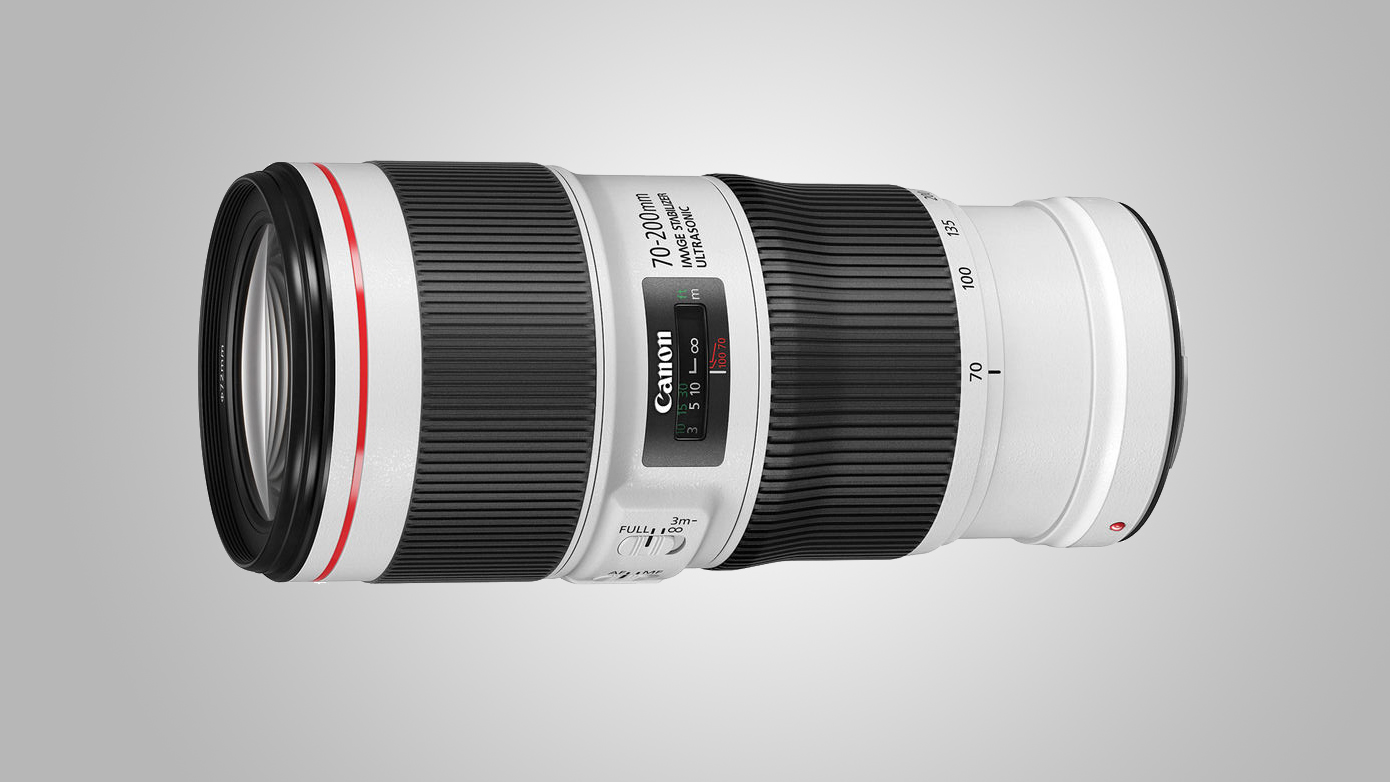TechRadar Verdict
A major upgrade of Canon’s popular 70-200mm f/4 IS lens, the new Mark II remains relatively compact and lightweight, but packs a heavyweight punch in terms of performance.
Pros
- +
Stellar sharpness and contrast
- +
Super-fast autofocus system
- +
3-mode, 5-stop stabilizer
Cons
- -
As pricey as Tamron’s f/2.8 lens
- -
Optional tripod mount ring is expensive
Why you can trust TechRadar
Canon has recently updated both of the 70-200mm telephoto zooms in its line-up that feature image stabilizers. The f/2.8 version, favoured by many professional and enthusiast photographers, reaches its third edition, with a merely minor refresh. A high-tech ‘Air Sphere Coating’ is added to one of the internal elements to reduce ghosting and flare, the front and rear elements gain keep-clean fluorine coatings, and the barrel gets a new paint job that’s a slightly paler shade of grey. There’s much bigger news when it comes to the new Mark II edition of the f/4 lens, which gets a major revamp.
Features
- Significantly smaller than f/2.8 version
- Features a completely new image stabilizer
- Optical path completely redesigned
With its f/4 aperture rating, this lens is a full f/stop slower than its f/2.8 stablemate but the upside is that it’s significantly smaller and barely more than half the weight, at 780g compared with 1,480g. As such, it’s much less of a strain for prolonged periods of handheld shooting, or simply for carrying around. For shooting with a tripod or monopod, especially in portrait orientation, it could still benefit from a tripod mounting ring. Canon offers the A II (W II) tripod mounting ring as an optional extra, but it’s typically expensive at £149/$145.
Focal length: 70-200mm
Mount: Canon EF
Filter size: 72mm
Max aperture: f/4
Maximum magnification: 0.27x
Dimensions: 80 x 176mm
Weight: 780g
You might find you don’t need a tripod or monopod anyway. The Mark II features a completely new image stabilizer that boasts exceptional 5-stop performance, representing a major update of the 3-stop stabilizer in the previous lens. It also outperforms the 3.5-stop stabilizer in the new 70-200mm f/2.8 Mark III lens. The number of switchable IS modes also rises from two to three. The existing static and panning modes are supplemented by a new third mode which only applies stabilization during actual exposures. This makes it easier to track erratically moving objects in the viewfinder, like birds in flight.
The optical path has been completely redesigned in the new lens, to improve image quality and reduce the minimum focus distance from 1.2m to 1.0m. A top-quality fluorite glass element teams up with two UD (Ultra-low Dispersion) elements, aiming of boost sharpness and contrast, while reducing colour fringing.
Unlike some recent Canon lenses that employ a stepping motor for autofocus, this one retains a ring-type ultrasonic system. However, it gains a new central processor unit and its overall design results in greater speed and accuracy.
Build quality and handling
- Construction feels very robust throughout
- Features extensive weather-seals
- Zoom and focus mechanisms fully internal
Although it’s a manageably lightweight lens, there’s nothing ‘lightweight’ about its build quality. The construction feels very robust throughout and features extensive weather-seals, ideal for shooting action sports and wildlife, whatever the weather. Fluorine coatings are also applied to the front and rear elements, which repel moisture and grease, as well as making them easier to clean.
As with most constant-aperture telephoto zoom lenses, the zoom and focus mechanisms are fully internal, so the physical length of the lens remains fixed throughout the entire zoom and focus ranges. Naturally, the constant-aperture design also means that the widest aperture of f/4 remains available at any zoom setting. A bonus of this is that if you’re shooting in manual or aperture-priority modes, you can rely on the aperture not changing as you zoom in and out.
Sign up for breaking news, reviews, opinion, top tech deals, and more.
A focus distance scale is positioned between the zoom and focus rings, and an autofocus limiter switch enables the short range below three metres to be locked out.
Performance
- IS every bit as impressive as advertised
- Sharpness and contrast are epic
- Delivers beautiful bokeh
The speed and effectiveness of the new autofocus and stabilization systems live up to Canon’s claims and are every bit as impressive as advertised. Sharpness and contrast are epic, even when shooting wide-open at f/4, and remain sensational throughout the entire zoom range. The lens also performs flawlessly in terms of minimizing color fringing and flare, and delivers beautiful bokeh, especially towards the long end of the zoom range. All in all, it’s hard to fault any aspect of the Mark II’s performance.
Verdict
A major upgrade of Canon’s popular 70-200mm f/4 IS lens, the new Mark II remains relatively compact and lightweight, but packs a heavyweight punch in terms of performance. The speed and accuracy of its autofocus system, the effectiveness of its image stabilizer, and its outright image quality make it a very desirable lens. It’s also very easy to live with, being much less heavy than 70-200mm f/2.8 zooms. Even so, autofocus, stabilization and outright image quality are no better than from Tamron’s fabulous 70-200mm f/2.8 G2 lens, which sells for the same price and, as an f/2.8 zoom, offers rather better value for money.
- Best lenses for Canon APS-C DSLRs
- Best lenses for Canon full-frame DSLRs
- Best wide-angle lenses for Canon DSLRs
- Best telephoto lenses for Canon DSLRs
- Best macro lenses for Canon DSLRs
- Best portrait lenses for Canon DSLRs
